Table of Contents
Dust collecting on your elliptical? Treadmill turned clothes rack? If you're wondering where to sell home gym equipment, you're not alone. Many of us start with the best intentions, building a home gym only to find it becomes more of a decorative feature than a fitness hub. But don't let that equipment gather dust and lose value. This guide is your roadmap to turning that unused gear into cash. We'll explore the best online marketplaces, like eBay and Facebook Marketplace, weighing their pros and cons for selling fitness equipment. We'll dive into pricing strategies, teaching you how to assess your equipment's value and set a competitive price. Plus, we'll cover essential tips for preparing your equipment for sale, from cleaning and photography to writing compelling listings that attract buyers. Finally, we'll look beyond the online world, exploring local options for selling your home gym equipment quickly and efficiently. So, let's get started and transform that unused equipment into money in your pocket!
Assessing Your Equipment: What to Consider Before Selling Your Home Gym Equipment
Assessing Your Equipment: What to Consider Before Selling Your Home Gym Equipment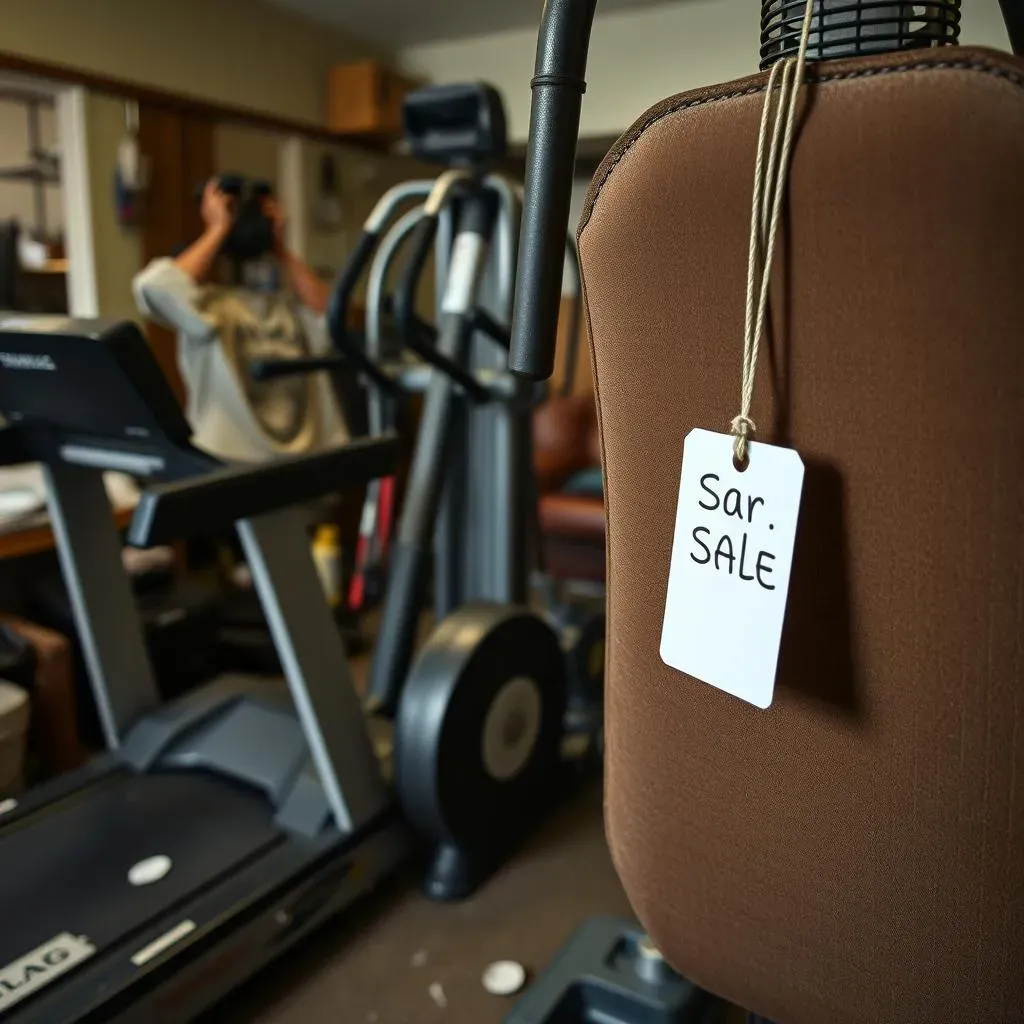
Honest Evaluation: More Than Just a Quick Glance
Alright, before you even think about snapping photos and listing your gear, let's get real about its condition. I mean, really real. We're talking beyond just wiping off the sweat (though definitely do that!). Think about it: would you buy this equipment in its current state? Check for rust, tears in the upholstery, frayed cables, and any wonky noises it might be making. Be brutally honest with yourself; it'll save you headaches (and potentially bad reviews) later on.
Don't just focus on the obvious stuff either. Dig into the functionality. Does the resistance adjust properly on your weight machine? Does the heart rate monitor on your treadmill actually work? Are all the nuts and bolts tightened? A little elbow grease now can significantly increase your selling price and make the whole process smoother. Remember, transparency is key. Disclose any flaws upfront; buyers appreciate honesty, and it builds trust.
Know What You've Got: Model, Age, and Features
now that you've assessed the condition, it's time to gather some intel. What exactly are you selling? Knowing the make, model, and age of your equipment is crucial for pricing it accurately and attracting the right buyers. Dig out the original manuals, check for model numbers on the equipment itself, and do some online research. Understanding the original features and specifications will help you highlight the benefits in your listing.
Beyond the basics, consider any additional features or accessories that might add value. Did you upgrade the console on your elliptical? Do you have extra weight plates for your barbell? These details can make your equipment stand out from the competition. Also, think about the original price. While it's not the only factor, knowing what you initially paid can provide a baseline for your asking price. Think of it like selling a car - the more details you have, the better!
Equipment Type | Key Considerations | Where to Find Information |
|---|---|---|
Treadmill | Motor condition, belt wear, console functionality | Model number on the base, manufacturer's website |
Weight Machine | Cable condition, resistance settings, upholstery | Original manual, online reviews |
Elliptical | Resistance levels, console display, smoothness of motion | Model number near the pedals, customer support |
Online Marketplaces: The Best Platforms to Sell Your Used Home Gym Equipment
Online Marketplaces: The Best Platforms to Sell Your Used Home Gym Equipment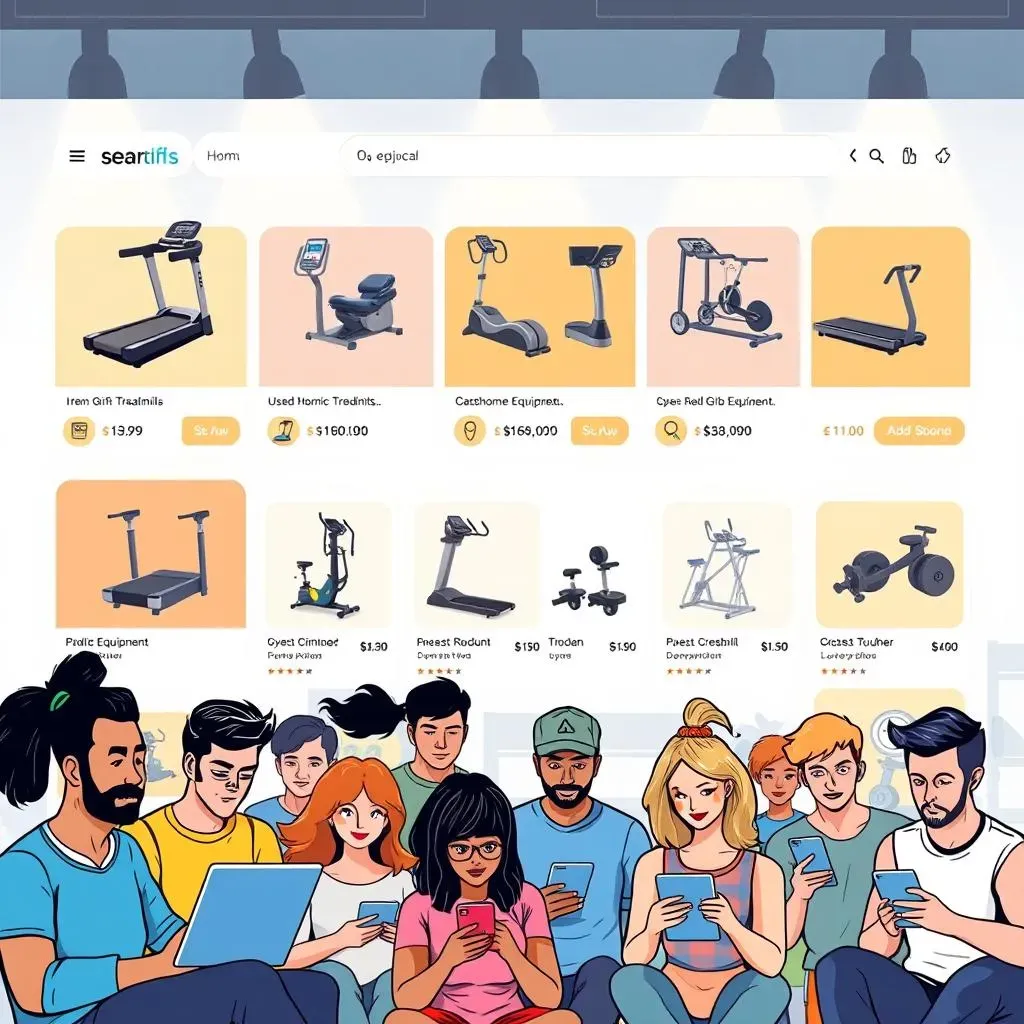
eBay: The Auction House Approach
eBay, the granddaddy of online marketplaces, can be a solid option for selling your used gym equipment. The auction format can drive up the price if you have a desirable item and multiple interested bidders. Plus, eBay's massive reach means your listing will be seen by a huge audience. However, be prepared to deal with shipping logistics, which can be a pain with bulky items. Also, factor in eBay's fees, which can eat into your profits. I sold an old weight bench on eBay once, and after fees and shipping, I made less than I expected. So, do your homework before you list!
One tip: take advantage of eBay's detailed listing options. Provide as much information as possible about your equipment, including its condition, features, and any accessories. Use high-quality photos to showcase your item from all angles. And be responsive to questions from potential buyers. The more information you provide, the more likely you are to attract serious bidders and get a good price.
Facebook Marketplace: Local is Key
Facebook Marketplace is another popular option, especially for larger equipment that's difficult to ship. The focus here is on local buyers, making it ideal for items like treadmills, weight machines, and elliptical trainers. The best part? It's free to list! You can easily upload photos and descriptions, and communicate directly with potential buyers through Facebook Messenger. I've had good luck selling smaller items like dumbbells and kettlebells on Facebook Marketplace. The key is to be responsive and arrange a safe and convenient meeting place for the exchange.
However, be prepared for some haggling. Buyers on Facebook Marketplace often expect to negotiate the price. Also, exercise caution when meeting strangers. Choose a public location for the exchange, and consider bringing a friend along for safety. While Facebook Marketplace can be a quick and easy way to sell your equipment, it's important to be smart and protect yourself.
Specialty Fitness Equipment Sites: Niche is Nice
Don't overlook the niche marketplaces! Several websites cater specifically to used fitness equipment. These sites often attract a more targeted audience of serious buyers, which can translate to higher prices. Some popular options include sites like Global Fitness and Used Gym Equipment. These platforms typically offer features like secure payment processing and shipping assistance, making the selling process smoother and more professional.
However, be aware that these specialty sites may charge higher fees than general marketplaces like eBay or Facebook Marketplace. Also, they may have stricter requirements for listing your equipment, such as detailed descriptions and professional-quality photos. But if you're looking to get top dollar for your equipment and want a hassle-free selling experience, a specialty fitness equipment site might be worth the investment.
Marketplace | Pros | Cons |
|---|---|---|
eBay | Large audience, auction format | Shipping logistics, fees |
Facebook Marketplace | Free to list, local buyers | Haggling, safety concerns |
Specialty Fitness Sites | Targeted audience, professional features | Higher fees, stricter requirements |
Pricing It Right: How to Determine the Value of Your Home Gym Equipment
Pricing It Right: How to Determine the Value of Your Home Gym Equipment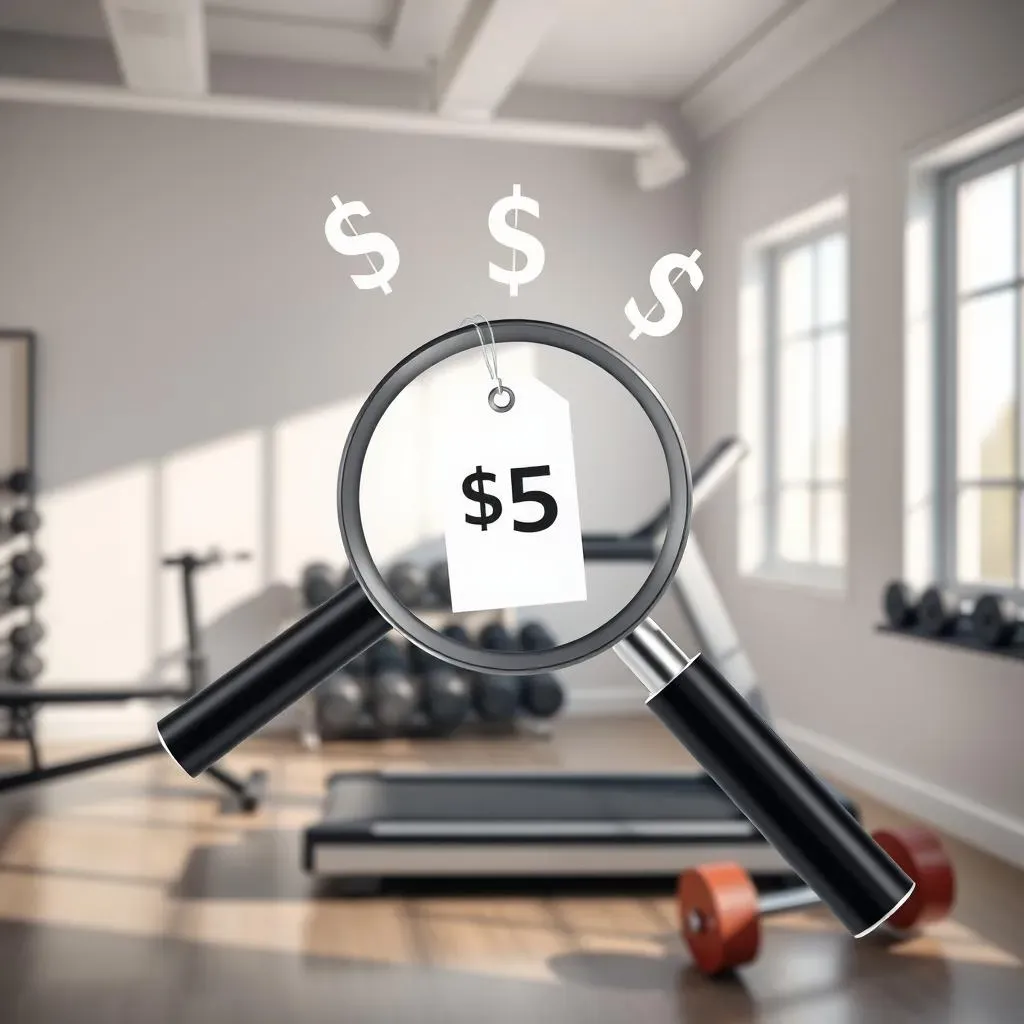
Research is Key: What's the Market Saying?
Alright, so you've got a good handle on your equipment's condition and specs. Now comes the fun part: figuring out how much it's actually worth. Don't just pull a number out of thin air! Start by doing some serious research. Check out similar listings on eBay, Facebook Marketplace, and those specialty fitness equipment sites we talked about. What are other people asking for the same or similar equipment? Pay close attention to the condition of those items, as well as any additional features or accessories they might have. This will give you a good baseline for your own pricing.
Also, consider the age of your equipment. Like cars, fitness equipment depreciates over time. A five-year-old treadmill isn't going to fetch the same price as a brand-new one, even if it's in good condition. Factor in the original price of your equipment as well. While you're not likely to get back what you initially paid, knowing the original price can help you set a reasonable asking price. Remember, the goal is to find that sweet spot where you're getting a fair price and attracting potential buyers. It’s a balancing act!
Don't forget to factor in the brand reputation. Well-known and respected brands, such as NordicTrack, Peloton, and Life Fitness, often hold their value better than lesser-known brands. If you have equipment from a reputable brand, be sure to highlight that in your listing. It can be a major selling point for potential buyers. Think of it like buying a used car – would you rather buy a Honda or a no-name brand? The same principle applies to fitness equipment.
Condition Counts: Adjusting for Wear and Tear
Remember that honest evaluation we did earlier? Now it's time to put that information to use. The condition of your equipment will have a significant impact on its value. If your treadmill is in pristine condition with low mileage, you can likely ask for a higher price than if it's beat up and barely functioning. Be realistic about the wear and tear, and adjust your price accordingly. It's better to be upfront about any flaws and price your equipment competitively than to try to hide them and risk alienating potential buyers.
Consider offering a discount for minor cosmetic issues, such as scratches or small tears in the upholstery. These imperfections don't necessarily affect the functionality of the equipment, but they can deter some buyers. A small price reduction can make your equipment more attractive and increase your chances of making a sale. On the other hand, if your equipment has significant mechanical issues, you may need to lower your price substantially or consider selling it for parts. It all depends on the severity of the problem and the demand for that particular type of equipment.
Condition | Price Adjustment | Description |
|---|---|---|
Excellent | Original Price or Slightly Below | Like new, minimal wear and tear |
Good | 10-20% Below Original Price | Minor cosmetic issues, fully functional |
Fair | 30-50% Below Original Price | Noticeable wear and tear, some functional issues |
Poor | 50%+ Below Original Price or for Parts | Significant mechanical issues, heavy wear and tear |
Setting Your Price: Art or Science?
you've done your research, assessed the condition, and considered the brand and age of your equipment. Now it's time to set your price. Should you start high and negotiate down, or price it low to attract a quick sale? There's no one-size-fits-all answer. It depends on your goals, your timeline, and the demand for your equipment. If you're not in a hurry to sell and you're confident in the value of your equipment, you might start with a slightly higher price and be willing to negotiate. This gives you some wiggle room and allows potential buyers to feel like they're getting a deal.
However, if you need to sell your equipment quickly, it's often better to price it competitively from the start. This will attract more buyers and increase your chances of making a sale in a timely manner. You can also use a "best offer" option, which allows potential buyers to submit their own offers. This can be a good way to gauge interest and see what people are willing to pay. Just be prepared to field some lowball offers! Ultimately, the best pricing strategy is the one that works for you. Experiment with different approaches and see what gets the best results.
Remember to be flexible and willing to adjust your price if necessary. If your equipment isn't selling after a few weeks, it might be a sign that your price is too high. Don't be afraid to lower it slightly to attract more interest. The goal is to find that sweet spot where you're getting a fair price and making a sale. And don't forget to factor in any fees or shipping costs when setting your price. You want to make sure you're still making a profit after all is said and done.
Preparing for the Sale: Cleaning, Photography, and Listing Tips for Your Gym Equipment
Preparing for the Sale: Cleaning, Photography, and Listing Tips for Your Gym Equipment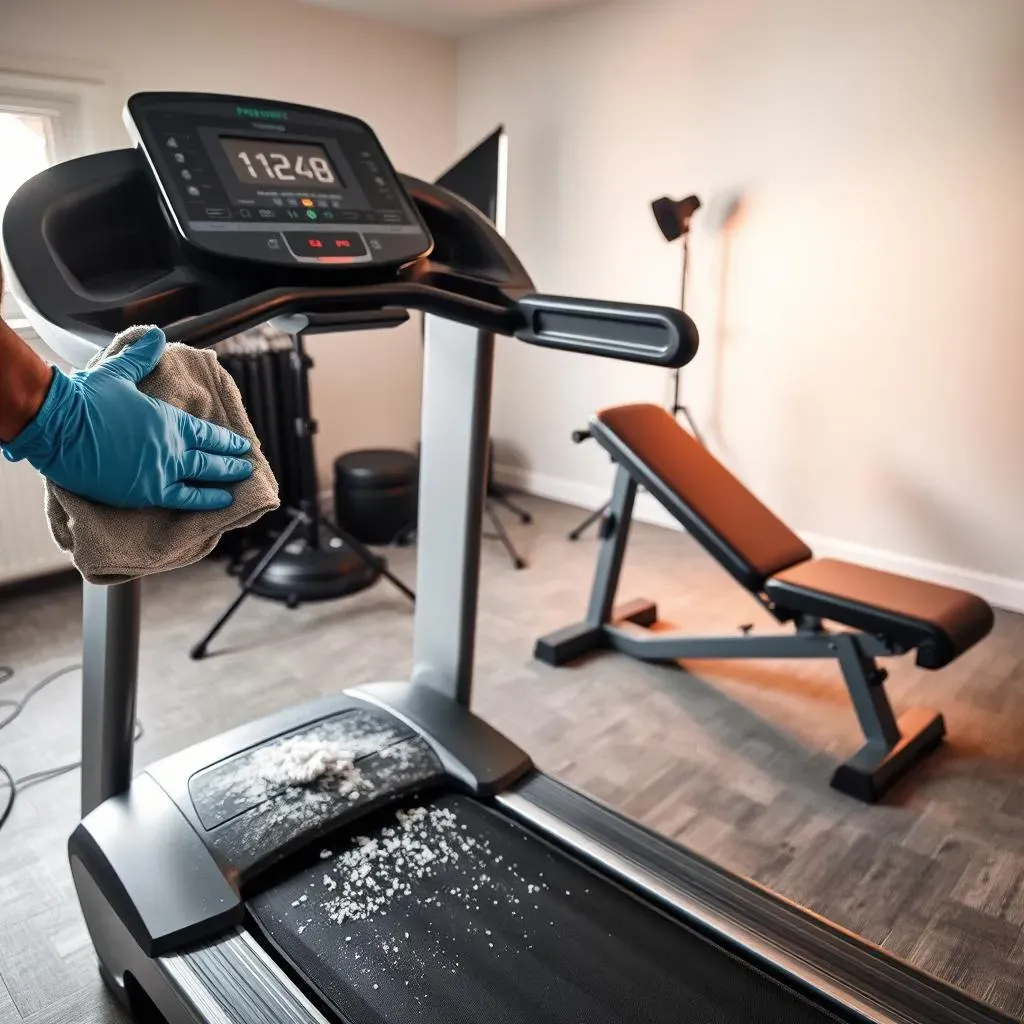
Spick and Span: Cleaning Your Equipment Like a Pro
Alright, so you've priced your equipment to sell, but before you even think about snapping a photo, let's talk cleaning. I'm not talking about a quick wipe-down with a dry cloth. I mean, really get in there and make that equipment shine! Think about it: would you buy something that's covered in dust, sweat, and grime? Probably not. A little elbow grease can go a long way in making your equipment look more appealing and increasing its value.
Start by vacuuming up any loose dust, dirt, or debris. Then, use a damp cloth with a mild detergent to wipe down all surfaces. Pay special attention to areas that tend to accumulate sweat, such as handles, seats, and consoles. For tougher stains, you can use a specialized cleaning solution designed for fitness equipment. Just be sure to test it in an inconspicuous area first to make sure it doesn't damage the finish. And don't forget to clean those nooks and crannies! Use a small brush or cotton swab to get into hard-to-reach areas. The goal is to make your equipment look as close to new as possible.
- Vacuum: Remove loose dust and debris.
- Damp Cloth & Mild Detergent: Wipe down all surfaces.
- Specialized Cleaner: For tough stains (test first!).
- Small Brush/Cotton Swab: Clean hard-to-reach areas.
Picture Perfect: Capturing Attention with Great Photos
your equipment is sparkling clean. Now it's time to take some photos that will make buyers drool. Remember, in the online world, photos are everything. They're the first thing potential buyers will see, so you want to make sure they're high-quality and showcase your equipment in the best possible light (literally!). Don't just snap a few blurry photos with your phone in a dimly lit room. Take the time to set up a proper photoshoot.
Start by finding a well-lit area with a clean background. Natural light is always best, so try to take your photos during the day near a window. Avoid using harsh flash, which can create unflattering shadows. Take photos from multiple angles, showing off all the key features of your equipment. Zoom in on any details that might be of interest to buyers, such as the console display or the resistance settings. And be sure to include photos of any flaws or imperfections. Honesty is always the best policy. The goal is to create a set of photos that accurately represent your equipment and entice buyers to learn more.
Photo Tip | Description |
|---|---|
Lighting | Use natural light whenever possible. |
Angles | Capture from multiple angles. |
Details | Zoom in on key features and flaws. |
Background | Keep it clean and uncluttered. |
Beyond Online: Alternative Ways Where to Sell Home Gym Equipment Locally
Beyond Online: Alternative Ways Where to Sell Home Gym Equipment Locally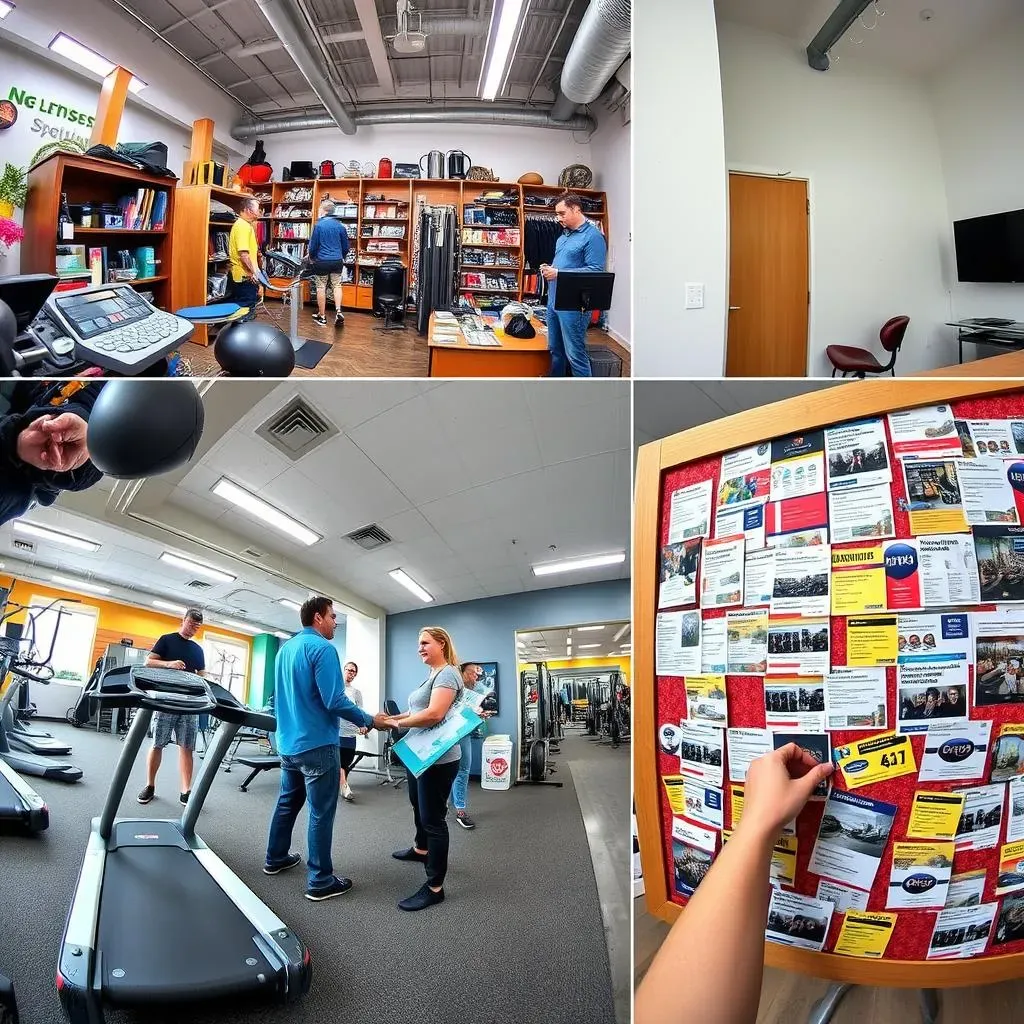
Consignment Shops: Let Someone Else Do the Work
so maybe the whole online selling thing feels like too much hassle. I get it! There's another avenue to explore: consignment shops. These are stores that specialize in selling used goods, and some may even focus on fitness equipment. The beauty of this approach is that you hand over your equipment, and they handle the entire sales process – pricing, marketing, and dealing with customers. It's a hands-off way to get rid of your gear and make some money without lifting a finger (well, almost!).
Of course, there's a trade-off. Consignment shops typically take a percentage of the final sale price, so you won't make as much as you would selling it yourself. But for some people, the convenience is worth the cost. Do some research to find consignment shops in your area that specialize in fitness equipment or sporting goods. Ask about their commission rates, their sales process, and their track record. And be sure to inspect the shop to make sure it's clean, organized, and well-maintained. You want your equipment to be showcased in a professional and appealing environment.
Local Gyms and Fitness Centers: A Targeted Audience
Here's a thought: why not cut out the middleman and sell directly to local gyms and fitness centers? They're always looking to upgrade their equipment or add new pieces, and they might be interested in buying your used gear. This approach can be particularly effective if you have high-quality equipment from a reputable brand. Contact local gyms and fitness centers in your area and inquire about their equipment needs. Be prepared to provide details about your equipment, including its condition, age, and price. You might even offer a discount for bulk purchases.
This approach has a few advantages. First, you're dealing with a targeted audience of serious buyers who know the value of fitness equipment. Second, you can often negotiate a better price than you would with a consignment shop. And third, you can avoid the hassle of shipping or transporting the equipment yourself. Of course, there's no guarantee that a local gym will be interested in buying your equipment. But it's worth a shot! You might be surprised at the results. I know someone who sold an entire home gym setup to a local CrossFit gym and made a killing!
Community Bulletin Boards and Classified Ads: Old School Still Works
In this digital age, it's easy to forget about the power of old-school methods. But community bulletin boards and classified ads can still be effective ways to sell your used gym equipment locally. Post a flyer on community bulletin boards at local gyms, community centers, and coffee shops. Include a photo of your equipment, a brief description, and your contact information. You can also place a classified ad in your local newspaper or online classifieds website. These ads are often inexpensive and can reach a wide audience in your community.
While these methods might not be as glamorous as selling online, they can be a great way to connect with local buyers who are looking for a good deal. Be sure to include all the essential information in your ad, such as the type of equipment, its condition, and your asking price. And be prepared to answer questions from potential buyers. The key is to make it easy for people to find you and learn about your equipment. So, don't dismiss the old-school methods! They might just surprise you.
Method | Pros | Cons |
|---|---|---|
Consignment Shops | Hands-off, convenient | Lower profit margin |
Local Gyms | Targeted audience, potential for higher prices | No guarantee of interest |
Bulletin Boards/Classifieds | Inexpensive, reaches local audience | Less targeted, may require more effort |
From Clutter to Cash: Finding the Right Home for Your Gym Equipment
Selling your used home gym equipment doesn't have to be a daunting task. With a little preparation, the right platform, and a realistic pricing strategy, you can successfully turn that unused gear into cash. Whether you choose the broad reach of online marketplaces or the convenience of local sales, remember to highlight the value and benefits of your equipment to potential buyers. So, take that first step, clear out the clutter, and let someone else enjoy the benefits of your once-loved home gym!